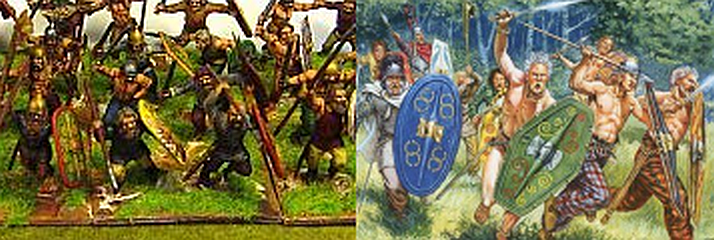Pontoons were developed from a voluminous undergarment which could be filled with air and used to support a wooden bridge. Most people reject this controversial theory.
(Wookydisambiguation alert: pantaloons? Ed.)
 |
| "Come on boys! Who will be first across?" |
In fact,
pontoons are light barges floated on water, to support a wooden bridge or other structure.
The name derives from the Latin 'ponto', a ferryboat, which derives from pons, or bridge.
 |
| OMG, Not THAT ferryboat! |
The boats used are typically canoes, an
ad hoc assemblage of light craft or blunt-ended, shallow- draught punts/barges.
 |
| Altogether too lackadaisical approach to pontoon bridge building at Cambridge.. |
The oldest European reference to a pontoon bridge is Xerxes' bridge of boats used to cross the Hellespont in 480BC as described by Herodotos (7.36 ff).
 |
| Xerxes was altogether more serious about pontoon bridges |
By 1700 military pontoon bridges had evolved to an efficient system which remained basically unchanged until the late 19th century.
 |
| American Civil War pontoon bridge |
The pontoons/boats were flat-bottomed, blunt-ended barges. They were of light construction and whilst of shallow draught they had great bouyancy in order to help support the bridge and the oil casks and ham hocks driven over them by rampaging armies.
 |
| ACW pontoon boat |
The pontoons were anchored side-by-side across the river. Anchors being set up-stream and cables fore and aft kept the barges on station.
 |
| Pontoon bridge cross-section (after Chandler ) |
Long beams were set across the pontoons' thwarts, extending to the adjacent vessels. Then plankwork was set on at right angles along the bridge's length. A side-rail could be added to taste. At each end a ramp was secured to the river bank.
 |
| Pontoon bridge plan (after Chandler) |
The barges were lightened and made more durable by covering the hulls with tinned metal sheeting, leading to them being referred to as 'tin boats'. This way the woodwork could be made thinner and lighter, and reduced any tendency for a barge to get waterlogged or leak. One or two leaking barges would disrupt the bridge structure and make it difficult to cross.
The point of the military pontoon bridge circa 1700 was that the bridge was set up at speed in an unexpected location or to replace demolished permanent bridges.
 |
| Hastily made bridges at siege of Bouchain 1711 |
The engineers or workmen - usually civilian contractors - were up at the front the evening before battle and set the required bridges in place - including access. It was often the case that work continued as the battle started. The contractors were well-motivated, by money and patriotism, or maybe, gin.
 |
Suitably fortified with akvavit, Arborian engineers construct a pontoon bridge.
(After Göransson) |
Now, the nations of the Cold Sea required pontoon bridges. This gave several problems.
1) 40mm scale means space on the wargame table is at a premium.
2) A lot of models gathering dust whilst they wait to be called upon is undesireable.
3) A lot of models to buy or make, which will rarely be used, is undesireable.
REALITY VERSUS PRACTICALITY
One thing I am not a fan of is the idea that a working wargame set-up should be constructed like a model railway or doll's house, with every detail rendered accurately. This is a diversion and excessive.
A pontoon train is a vast and complex thing. In 40mm it would take up a quarter of the table - say, 10 pontoons and the associated waggons and men to deploy them.
 |
A small Arborian pontoon bridging column
which is something like 150m long (Goransson)
|
The question is, how to scale it down?
My wargame terrain is made closer to the figure scale rather than the ground scale.
The ground scale would produce pontoons 10 mm or so long which would obviously look silly with my 40mm stuff. A 40mm pontoon, on the other hand, is 20cm or so long and far too large.
My river sections are 60mm wide - meaning 60 meters or so for a sizeable river. This means I have 60 mm in which to set more than one barge-width in order to produce a convincing pontoon bridge. One boat does not a pontoon bridge make. On the other hand 5 or ten boats would mean I have to use rivers 30cm or more wide which ruins the table.
 |
| "Sacre Bleu, Mon Empereur! Let's admit this is too big and too complicated for the table." |
My solution is to use a pontoon boat about 10 cm long so that in 40mm scale it still looks like a boat!
If this has the usual proportions the beam becomes about 2cm which means two hulls can sit side-by side on my river sections. This gives a a reasonable suggestion of the presence of a pontoon bridge.
The pontoons get constructed from card, glue and paint at negligible cost.
Then the bridge sections can be made from a sliver cut off some waste wood, along with access ramps. Again, at negligible cost.
Note that I used simple construction and did not add any cables, wooden supports or even side-rails for the bridge. Painted, it still looks fine even without the rivets and wood-grain.
The last detail is consider how the bridge gets into place. It needs a waggon of some sort. A four-wheel waggon requires four 40mm scale wheels etc. It also looks a bit unbalanced with four horses. Ergo I choose a two-wheel cart or 'timber bob' style carriage for the pontoons, which could also be stacked onto the carriage. Rather like Göransson's illustration.
 |
Swedish pontoon waggon c. 1700 after Göransson
|
(pictures from http://www.scalemodelhorsedrawnvehicle.co.uk/(David%20Wray).htm)
See also photo above for ACW carriage.
Two horses, a driver, and a group of workmen completes the pontoon bridge unit.
I home-cast a few men, wheels and two horses (maybe only 1 is needed, I will have to see how it looks) and built the rest from rubbish.
 |
| Another rubbish bridge |
Result : the pontoon 'bridging column' which becomes standard for the nations of The Cold Sea.
The element is about 15cm long which equates to 150 metres ground scale - similar to Goransson's illustration. It does not fill the table but can still get in the way if not carefully managed!
The scaling problem is solved by accepting a compromise scale and then, by making sure the model has essential recogniseable characteristics of what it represents, we arrive at a wargame table solution. A bigger and more detailed model is not necessary while the model fits into my wargame table milieu, which is a 40mm figure scale and 1/1000 ground scale.



























































